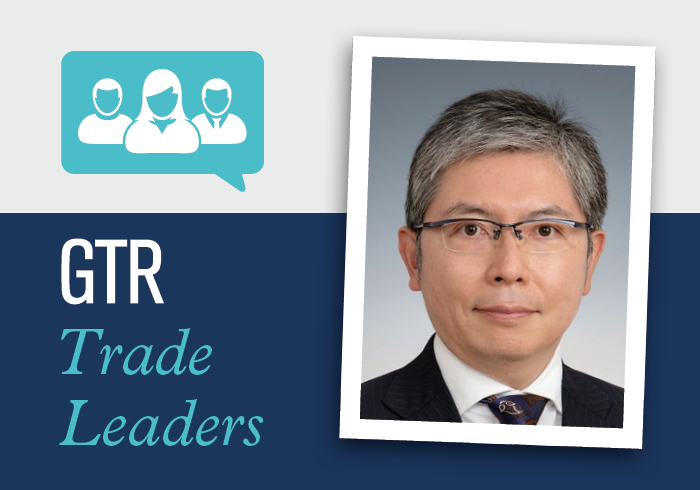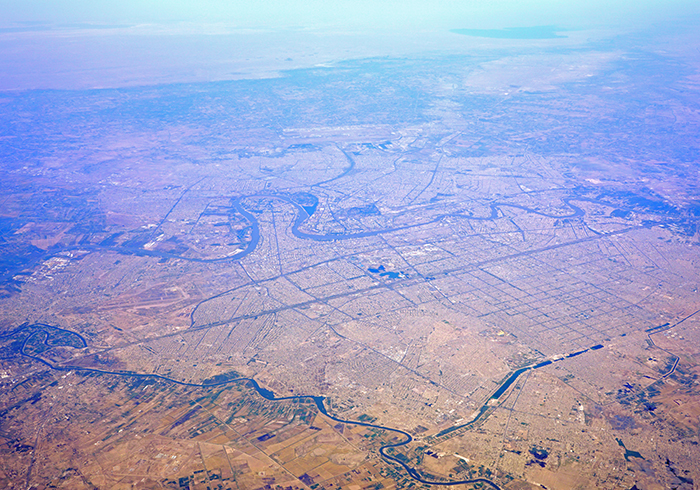Yuichiro Akita is president of the Berne Union and a senior general manager at Japan’s export credit agency, Nippon Export and Investment Insurance (Nexi).
The Berne Union brings together more than 80 members, including export credit agencies, multilateral institutions and insurers, which together provided US$3.3tn in fresh trade and investment support last year – a historic high.
In this instalment of GTR’s Trade Leaders Interviews, conducted in mid-August, ahead of the release of the Berne Union’s Business Confidence Index, Akita discusses the survey findings, the rapid pace of change in the export finance market and efforts to boost blended finance solutions.
GTR: Can you provide a brief background of your career in the export finance sector?
Akita: I previously worked at MUFG Bank, where I gained experience in project and international finance, and then moved to Nexi 22 years ago, not long after it became an independent export credit agency (ECA) separated from the government. They needed someone from the financial sector, and I helped establish the foundations of its medium to long-term (MLT) business. It’s been a very rewarding job.
I’ve worked in the financing department across both tied and untied products, and my main fields were initially infrastructure and transportation, including aircraft financing. I spent a long time working with the Export-Import Bank of the United States on deals for Boeing aircraft, and nuclear financing was another big area of business for me. Half of my career at Nexi has been underwriting, with the other half related more to policy issues, working for the government and seconded to our cabinet secretariat.
GTR: What are your key objectives as Berne Union president?
Akita: ECA business is changing a lot and becoming faster and faster. As well as supporting exports, which is our main job, we are addressing geopolitical risk and climate change, critical minerals, defence transactions and also the UN Sustainable Development Goals (SDGs). In that way, the Berne Union members’ work is expanding.
As a result, there are a lot of fresh challenges for our members – we cannot pour new wine into old wine skins. While ECAs have a number of new mandates, the business is being carried out by the same personnel and the same organisational structures. Sometimes it is really challenging to deal with.
Nonetheless, it’s a really interesting moment to think about the future industry. At the Berne Union, we have OECD Arrangement members and also non-OECD providers like China and India, and they are also growing. We have dynamic exchanging of various approaches and business models. It’s a really exciting time and I like to facilitate those types of exchanges among members and even jointly with the external stakeholders like the multilateral development banks (MDBs), the World Bank or regional development banks.
GTR: Berne Union members recorded a historic high of US$3.3tn in new commitments last year. Can you provide a brief snapshot of activity in 2025?
Akita: The Berne Union is about to release a biannual survey of its members asking about their business confidence and their perspective for the second half of 2025. In general, the business outlook is strong on both the short-term and MLT sides.
Short-term demand is strong due to US tariff and trade barrier issues, and potentially because of a deterioration in the economic fundamentals. The credit risk of the buyers has increased, so customers are seeking cover.
On the MLT side, investors are deciding whether they should advance projects or wait and see, so it is hard to currently see the impact on ECA business. No trends have emerged yet. For now, the outlook for MLT business is strong and is expected to remain unchanged in the second half of the year.
The expectation is that claims will increase in the months ahead, notably in the short-term segment. We do not have oversight of specific region and country trends currently, but many members have flagged US tariff issues.
GTR: Looking at US tariffs and their impact on MLT cover providers, are there particular sectors where ECAs may face issues?
Akita: There have been widespread reports of US offshore wind project issues, but Berne Union members’ business is strong in the renewables and infrastructure sectors. Defence sector business is clearly increasing and eating a lot of ECA capacity, which is a big trend. Demand for defence products is huge in Europe, while European and Asian firms are major suppliers on the export side.
GTR: The Berne Union is running a Blended Finance Hackathon in early 2026. What is the purpose of the initiative and what types of challenges does it seek to overcome?
Akita: This is a very important initiative for me and feeds into my presidency vision statement: Berne Union Stride; advancing sustainability through resilience, innovation and diversity for empowerment.
Sustainability is at the forefront of this initiative, and I would like to encourage greater collaboration among the ECAs, development finance institutions and MDBs to contribute to the SDGs. That collaboration is exactly where we can do more in the space of blended financing. In February, we had a sustainability workshop jointly hosted by the International Chamber of Commerce and the Berne Union in London to discuss this matter, and in recent months, we held a panel event at the UN Financing for Development Conference in Seville. I was very surprised; the room was full.
ECAs have not historically been recognised in the context of development finance, however at the end of the Seville conference, a UN-adopted document was issued which outlined the importance of ECAs in driving sustainable development – both through tied and untied financing.
This was the first time that a UN document has recognised ECAs’ role in sustainable development. I was very pleased by this outcome and the fact it happened under my tenure.
Nonetheless, these are very much high-level policy discussions and we must find practical, working solutions. The Berne Union is pushing to overcome challenges at the practitioner level by inviting members and also commercial bankers, lawyers and brokers who are willing to contribute. Firstly, we are asking people to submit papers and will hold the hackathon event next year.
GTR: What factors have limited ECA activity in a region like Sub-Saharan Africa previously?
Akita: There are so many factors limiting ECA activity in Sub-Saharan Africa and which may explain why developing countries struggle to attract capital more broadly. But one potential issue is the expansion of ECA mandates, as discussed earlier. Our resources are limited. If governments instruct ECAs to support the green transition as much as possible, the easiest markets are in developed regions where policy mechanisms are established and country risk is manageable.
It takes time to conduct due diligence in developing countries, and state policy guidance sometimes pushes ECAs to do business closer to home. As an example, domestic finance can crowd out business for developing markets. Manpower and underwriting resources can be strained.
It is really difficult, and of course, there are additional external factors on both the ECA and commercial bank sides. It’s a very complex question.
GTR: When you look at Nexi’s role, do you see traditional export credits or untied financing playing a greater part in driving sustainable development overseas?
Akita: It is very important to continue with export financing under the OECD Arrangement guidance, which ensures a level playing field. Nexi very much honours those rules. However, again, the mandate is evolving and there is growing need for untied support, short-term products and also investment insurance.
All our products can achieve policy goals and potentially also contribute to [addressing] sustainability issues. It is very difficult to prioritise between export finance and untied.
As you may know, for a long time, a much larger portion of Nexi’s financing portfolio has been untied. But that is not something we necessarily want to see – our exporters’ competitiveness is being challenged by other major Asian economies in terms of engineering, procurement and construction projects. Supporting Japanese overseas investments or acquiring natural resources are more significant areas of business for us; they have been for a long time and may continue to be in the future.
Furthermore, we have established a new untied finance initiative, called ‘Lead’, which goes beyond traditional mandates and contributes to strategic goals, such as the deployment of new technologies, environment protection, strengthening diplomatic relations, and [overseas] development.
GTR: Looking at Ukraine, Nexi is one of several ECAs to have vouched support for the country. What has your ECA’s activity been like to date?
Akita: There are many Japanese businesses in Ukraine. From the beginning of the war, we kept our underwriting policy open for Ukraine and we have continued to support short-term trade and offered investment cover.
Nexi’s export support is focused on a few sectors, including automotive trade, and surprisingly, we have very, very few claim events. In the past two years, we experienced zero claims events dealing with Ukraine. Nexi has learned a lot supporting Ukraine during the war. We examine which regions possess the highest levels of war risk, and this type of analysis is now widespread among ECAs. We are yet to do any deals in the MLT space; however, we have a strong project pipeline and discussions are ongoing.






